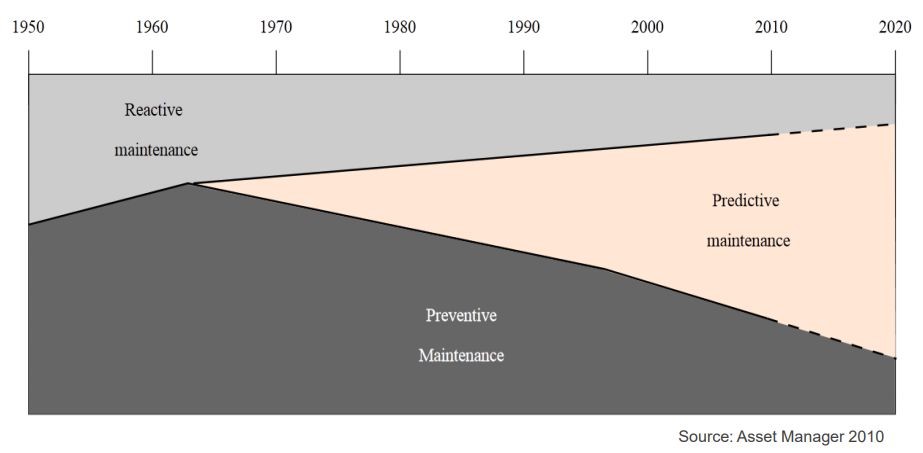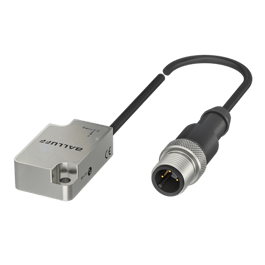At the factory production site, we can almost see all kinds of large and small motors running non-stop, providing continuous power for various on-site equipment such as machine tools, pumps, blowers, compressors, cranes, hoists and mining machinery. According to relevant statistics, in developed countries, the electricity consumed by motors has accounted for more than half of the total power generation. In China, the power consumption of motors accounts for about 65% of the total power generation.
As an important “large household” of energy consumption and as an important factory asset, the loss of shutdown and power-outage caused by a motor failure is obviously significant. Even the burn-out accident of the motor itself will cause various economic losses such as maintenance and power consumption to the user.
Therefore, how to perform real-time condition monitoring on a running motor, and online fault diagnosis or early predictive intelligent maintenance all have become important topics.

Predictive maintenance as the "smart" choice
For various of the more important production processes, it usually requires the motor to maintain a long, continuous and uninterrupted operation. Compared with the post-accident maintenance method after an accident, one usually adopts the regular uniform replacement and upgrade preventive maintenance method. Predictive maintenance can improve productivity significantly. It also is responsible for better asset value continuity and possesses investment protection capabilities; it equally promotes a higher safety value while demonstrating operational support.

The above figure shows that the predictive maintenance method has a wider application prospect than the after-sales maintenance and preventive maintenance. This trend is also due to the advantages of current sensor technology, data collection and analysis technology, cloud services, etc. brought about by cost reductions and the convenience of integration applications.
By equipping the motor with a professional condition monitoring sensor and further configuring the condition monitoring system, not only can potential faults and hidden dangers in the motor be detected in advance, but also to avoid equipment damage caused by sudden failures and endangering the personal safety of the operator. It can continuously monitor and collect the operating status parameters of the motor such as temperature, vibration, current, torque, etc., and store the collected data information in the database. Through the cross-comparison of parameters and trend analysis, the actual operating health status of the motor can be monitored. The evaluation part as the basis for predictive advance maintenance develops corresponding plans and processes for equipment maintenance.
The condition monitoring sensor as the savior of motors
The basis for mastering predictive maintenance through condition monitoring technology is understanding that a series of real-time dynamic data collection and feedback are performed on the motor through condition monitoring sensors and other technologies. It is not just one or two simple state alarm messages. According to the operating characteristics of the motor, vibration monitoring and temperature monitoring are two commonly used effective monitoring methods.
1) Vibration monitoring: For motor equipment within a certain vibration frequency range, frequency information can be monitored by using vibration sensors to collect vibration speed/acceleration parameters of motor bearings or bases. When the motor is in normal operation, the vibration frequency of the bearing and the frame will generally not change significantly. If the motor fails however, it will cause the vibration frequency of the bearing to change. Through spectrum analysis, after comparing with the known fault characteristic frequency, you can both judge the nature of the fault and discover its location.
2) Temperature monitoring: Through the temperature sensors embedded in the motor bearings, stator windings and other parts, the temperature signal during the operation of the motor is detected to determine whether the motor is faulty.
Obviously, the more data is collected, the more you know about the health condition of the motor. Considering the cost and installation factors, Balluff's new multi-function condition monitoring sensor of the BCM series provides an ideal solution.
In fact, the BCM series condition monitoring sensors can simultaneously detect multiple physical variables, such as vibration, temperature, relative humidity and environmental pressure. It can analyze and process the collected data, and then transmit the necessary ones to the main system through the IO-Link interface. The BCM series is designed to fully comply with the ISO 10816-3 international standard for mechanical vibration. The vibration frequency can be monitored in the range of 2-3200Hz, and the motor vibration speed (0-220mm/s) or acceleration (0-16g) parameters can also be measured. The contact temperature is measured in the range of 0-70°C, using an all-stainless-steel housing to provide at least IP67 level protection, and more.

Balluff’s BCM sensor system as an important factory asset can help with condition monitoring and predictive maintenance requirements both faster and better.
























